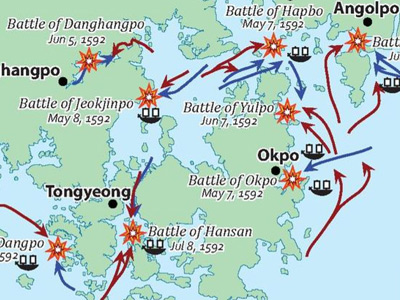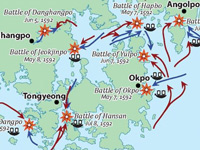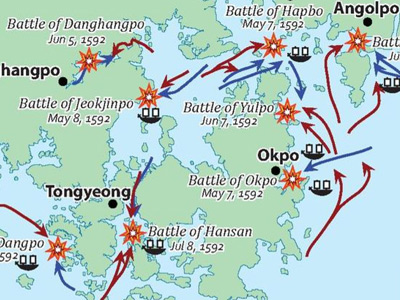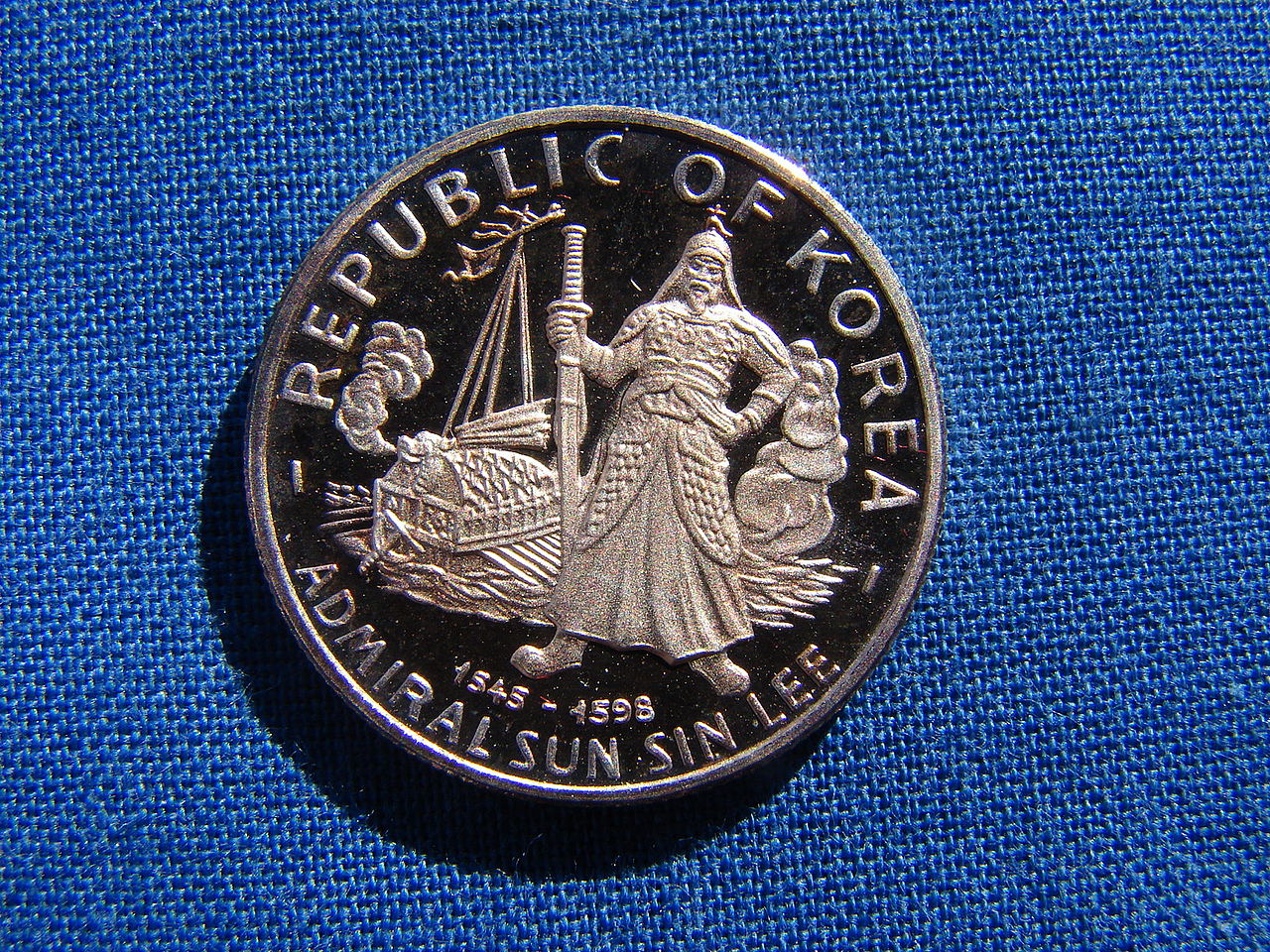Battle of Myeongnyang (1597)

Aftermath
The immediate results of the battle were a shock to the Japanese command. Without being resupplied or reinforced, the morale of the Japanese soldiers declined. Joseon and Ming armies were able to regroup. Even after the victory, however, the Joseon navy was still outnumbered by the remaining Japanese navy, so Admiral Yi withdrew to the Yellow sea to resupply his fleet and have more space for mobile defense. After hearing the news of the heroic victory, many surviving ships and sailors who had been hiding after the defeat at Chilcheollyang joined Admiral Yi's fleet.
The victory also enabled the Chinese navy to join Admiral Yi in early 1598. After the destruction of most of the Joseon fleet at Chilcheollyang, the Ming kept their navy stationed at important port cities to guard against possible Japanese naval attacks. The victory at Myeongnyang convinced the Ming government that they could ease security at their major ports and deploy a fleet to the Joseon navy's aid.
The Japanese navy was heavily damaged (while at least 30 of the Japanese fighting ships were destroyed, the total number of damaged ships, to include those supporting ships that may have sustained damage, was not clearly reported). As previously mentioned, Kurushima was killed and beheaded, and Todo Takatora (the hero of Chilcheollyang) was wounded. According to the Annals of the Joseon Dynasty, half of the Japanese sailors and marines were casualties.
Due to the Korean victory, after the Korean navy withdrew, even though the Japanese navy made an incursion into the western coast of Korea, near some islands of Yeonggwang County, they withdrew soon afterwards.
HISTORY

RESOURCES
This article uses material from the Wikipedia article "Battle of Myeongnyang", which is released under the Creative Commons Attribution-Share-Alike License 3.0.
© Stories Preschool. All Rights Reserved.










